Let’s ‘begin questioning the model
of creation and diffusion specific to intellectual labor and to get beyond the concept
of creativity as an expression of ‘individuality’ or as the patrimony of the ‘superior’
classes.’—Maurizio Lazzarato*
On 3rd October 2020, an unusually
large collective of the public—art workers, students, people from all walks of life—could
be seen marching down Tryggvagata in Reykjavik. Large hand-sewn pink banners reading
‘Nýju stjórnarskrána takk’ [The new constitution please!]
were carried by us—an enthused collective hoping for the rights and possibilities
enshrined in ‘A Proposal for a new Constitution for
the Republic of Iceland’.
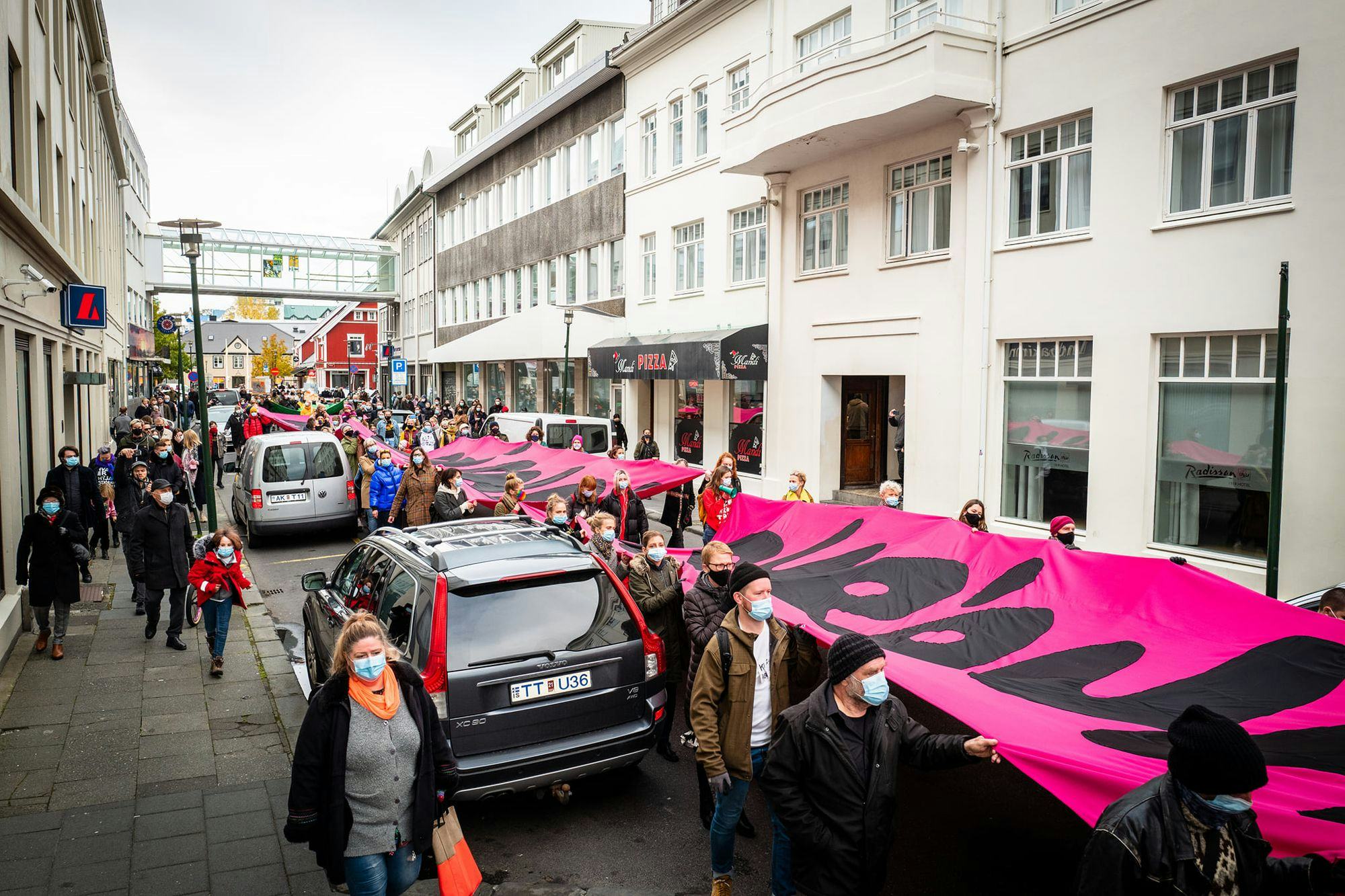
Photo: From the performance
In Search of Magic – A Proposal for a New Constitution for the Republic of Iceland
that took place on October 3rd 2020 – Austurvöllur square Reykjavík.
It’s this process of making jurisdiction
visible, mediated through the relationships between materials, disciplines and people—that
makes up the heterogeneous practice of Libia Castro
(ES) and Ólafur Ólafsson (IS). The economic, political
and social status of citizens across the world, and a deep feeling for historicity
and artistic research, is the palette from which their work springs to create collaborative
happenings, events, performances and environments. Whether it’s in ‘Lobbyists’ (2008), ‘Avant-garde Citizens’
(2007—) or ‘Your Country Doesn’t Exist’ (2003), the projects often
take on a life of their own, speaking forwards towards new imaginaries, and backwards,
to social practices of the 1970s and 80s, or to Brecht and Icelandic history.
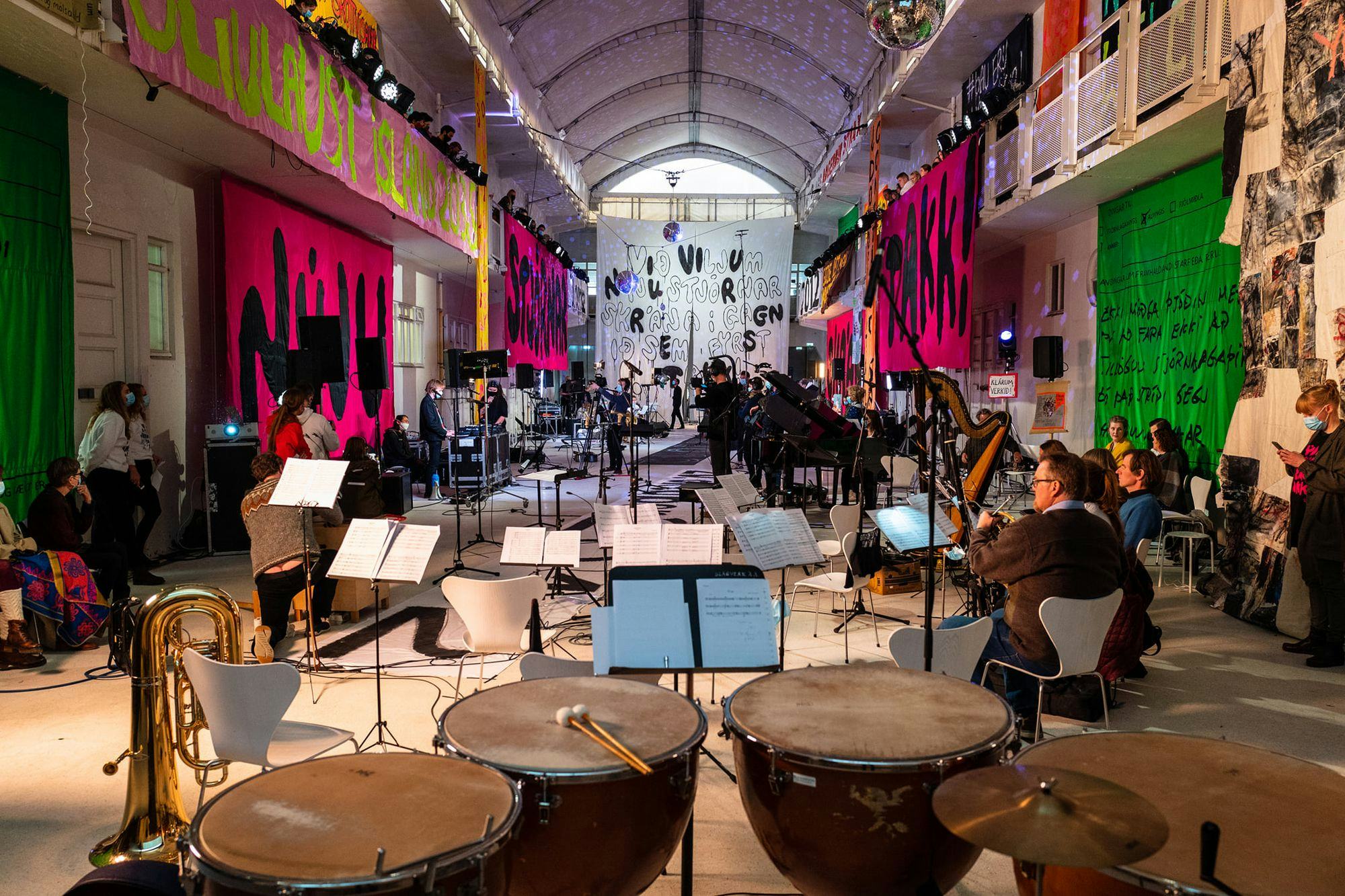
Aðfaraorð/Preamble. Music: Lay Low. Video: Libia Castro & Ólafur Ólafsson & The Magic Team
Titled ‘In Search for Magic – A Proposal for a New Constitution for the Republic
of Iceland’, their current project had its first chapter in 2008 and
has since sought to activate the people’s democratic constitution in a string of
collaborations with musicians, activists and Reykjavik Art Museum, through a commission
from the Cycle Visual Arts and Music Festival.
In this project—Libia tells me—‘there are two modes of time unfurling, in parallel and at different speeds’. First of all there is the activist process, currently ongoing, in which the artist collective are active members. This part is evolving at an uncontrolled pace, always gathering and then ceding momentum, depending on the work of activists and responses to the project. The second is the artwork itself, which has a concrete materiality, realised at a major exhibition at Hafnarborg Art Museum this November. They began with a collaboration with the composer, Karólína Eiríksdóttir, and the project has convened still more limbs since.
Music is central to the video and installation work on the constitution, which was recorded at Reykjavik Art Museum and involved around two dozen composers from Iceland, Denmark, Norway, Italy, Greenland and the US, who composed music for each article of the constitution. Over 100 people performed the works; different bands, a choir, an opera singer. ‘We didn’t want to create another narrative, or a theater, which would subdue or make light of the importance of the project’, they explain. ‘We like the play of going beyond a reading process, and bringing it into a new reality. Music allows for a gesture and a performance, and it’s in tandem with our interest in Brechtian theater—our desire to alienate the text, to detour or appropriate an already existing text.’ Music is an integral contribution to the interdisciplinary nature of the project, whereby the artwork is experienced in a deeply felt public space. The resulting video shown at Hafnarborg will be following their research into ‘Docu-musicals’, featuring documentation of staged performances and real life events.

Tu País No Existe (2019/20). From the project campaign: Your Country Doesn´t Exist (2003 – ongoing). Facade of Gabinete Literario, Las Palmas de Gran Canaria, Spain. Courtesy of the artists.
Responding to a question about the boundary between art and politics—that is—when art ceases to be art if it’s objective becomes too overtly goal-oriented or political, Libia and Ólafur consider this as a problematic through example: ‘When we started to create ‘Lobbyists’, we were interested in the common response to the work, which was ‘wow—how unartistic’. ‘That was 2008’, they remember, ‘and so much has changed since then. Let’s just imagine for a moment, what does this imposition of limits on art say about that time and about society? Then what is art? Cezanne? This is confusing for us, because history has already traversed conceptual art, so what are we now? Post-post conceptual?’
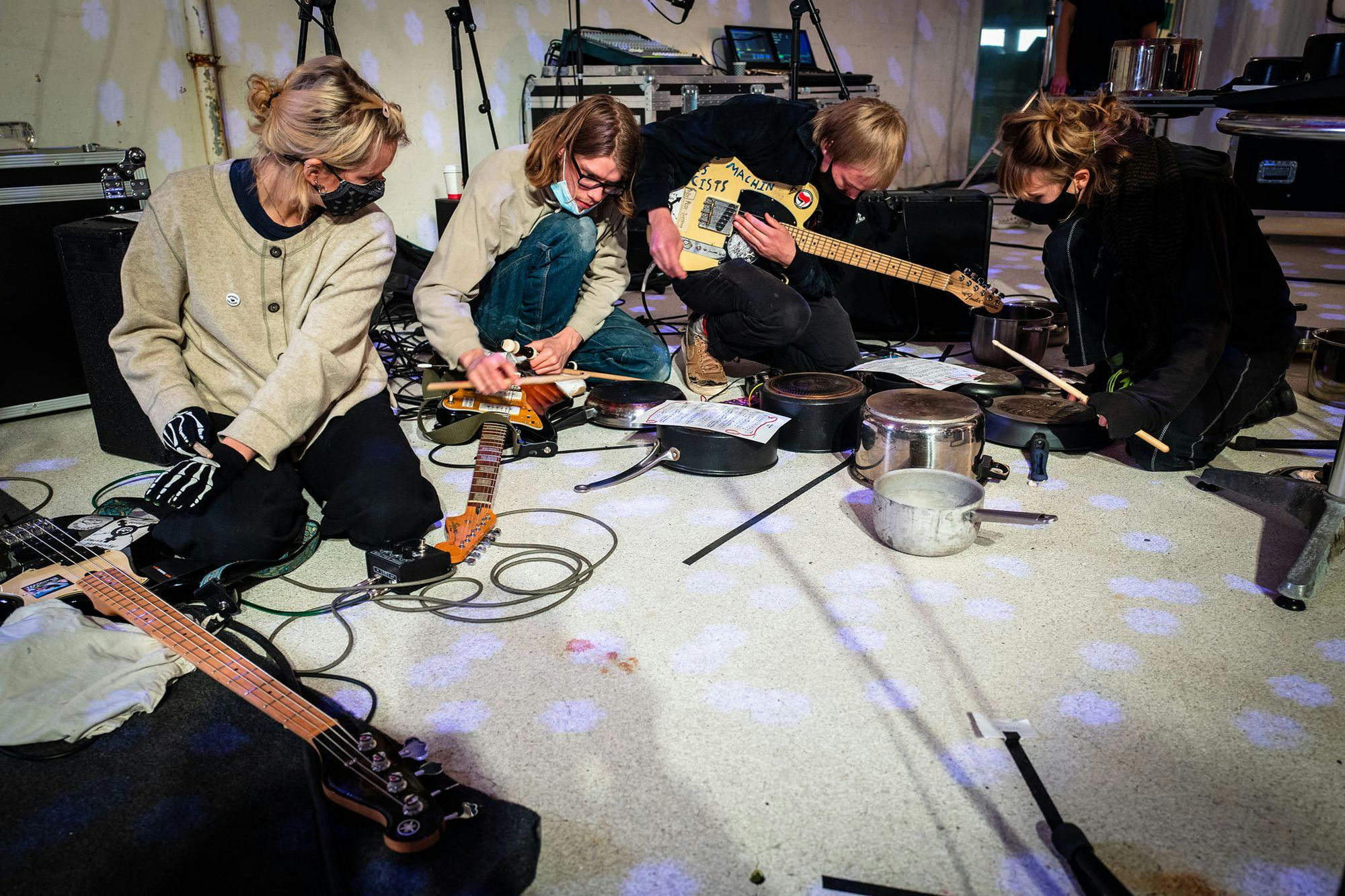
Over 100 people performed the works; different bands, a choir, an opera singer. In Search of Magic – A Proposal for a New Constitution for the Republic of Iceland that took place on October 3rd 2020 at Reykjavík Art Museum. Gróa and Korter í Flog performing.
Relational aesthetics, as it became popular through Nicolas Bourriaud when the pair began collaborating in the late ’90s, is ‘a narrowing tunnel—[which] had gone into a zone of comfort’. ‘We found relational aesthetics to not be politically critical and quite institutional… It felt like the loose or organic, free-flowing experiences of the ‘60s and ‘70s had been structured and subsumed into the program of the institutions. We felt a certain naturalisation of agency and of freedom.’
The artists emphasise that their practice goes beyond institutional critique and into the realm of the social: ‘Take for instance, Martha Rosler, who started creating environments that were connected to these two things, within the context of exhibition making but also, socio-politically contextualising what was going on in life, in living.’ In social practice, the ‘intellectual’ as an exclusive or individualistic endeavour is turned on its head, in Lazzarato’s terms. The spirit of collaboration can be seen in the making-process and preparation for the concert and demonstration, where their faces are subsumed into a sea of co-pilots, challenging autocracy and authorship in the creative process.
So we go back to the beginning with a speculative proposition: ‘to get beyond the concept of creativity as an expression of ‘individuality’ or as the patrimony of the ‘superior’ classes.’ Art is a political force, art goes beyond politics, art is a superorganism, art is a melody.
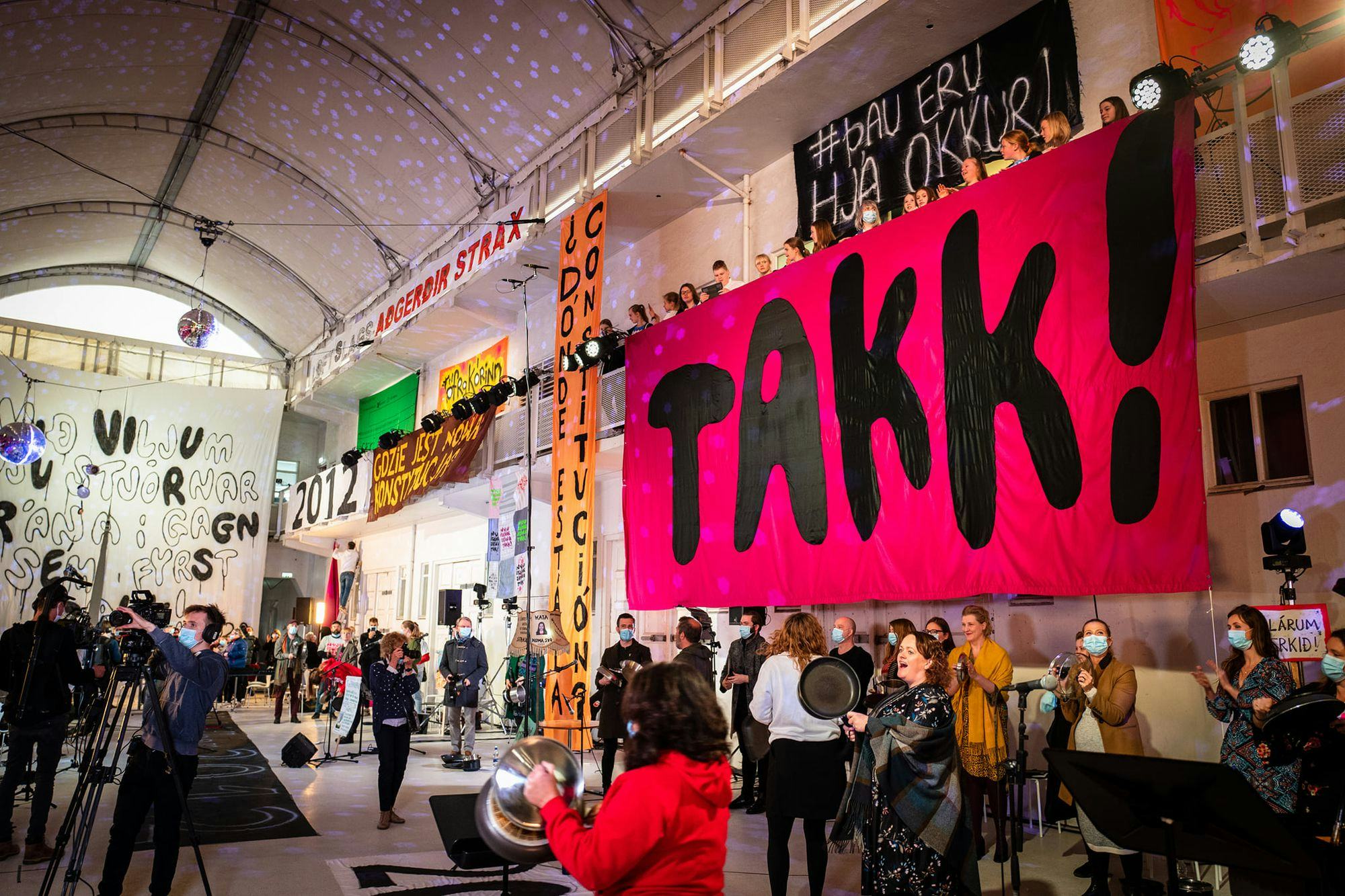
Photo: From the performance
In Search of Magic – A Proposal for a New Constitution for the Republic of Iceland
that took place on October 3rd 2020 – Austurvöllur square Reykjavík.
Read ‘A Proposal for a new Constitution for the Republic
of Iceland’. Castro and Ólafsson’s exhibition ‘Magic Meeting’ opens at Hafnarborg
in March 2021.
* Maurizio Lazzarato, ‘Immaterial Labor’, from Paolo Virno and Michael
Hardy, eds. Radical Thought In Italy: A Potential Politics, accessed 29 October
2020 [http://www.e-flux.com/wp-content/uploads/2013/05/2.-Maurizio-Lazzarato-Immaterial-Labor.pdf]
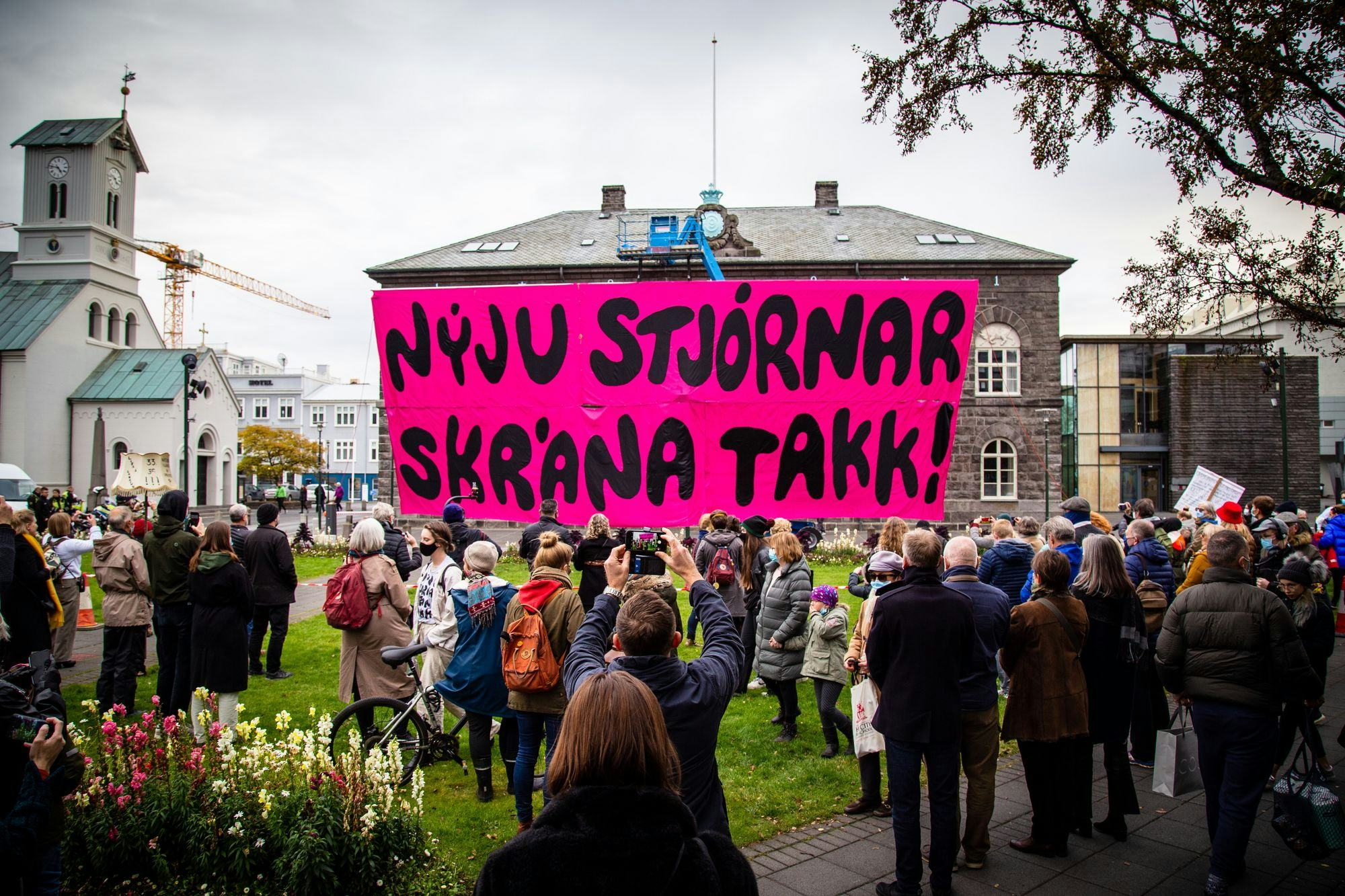

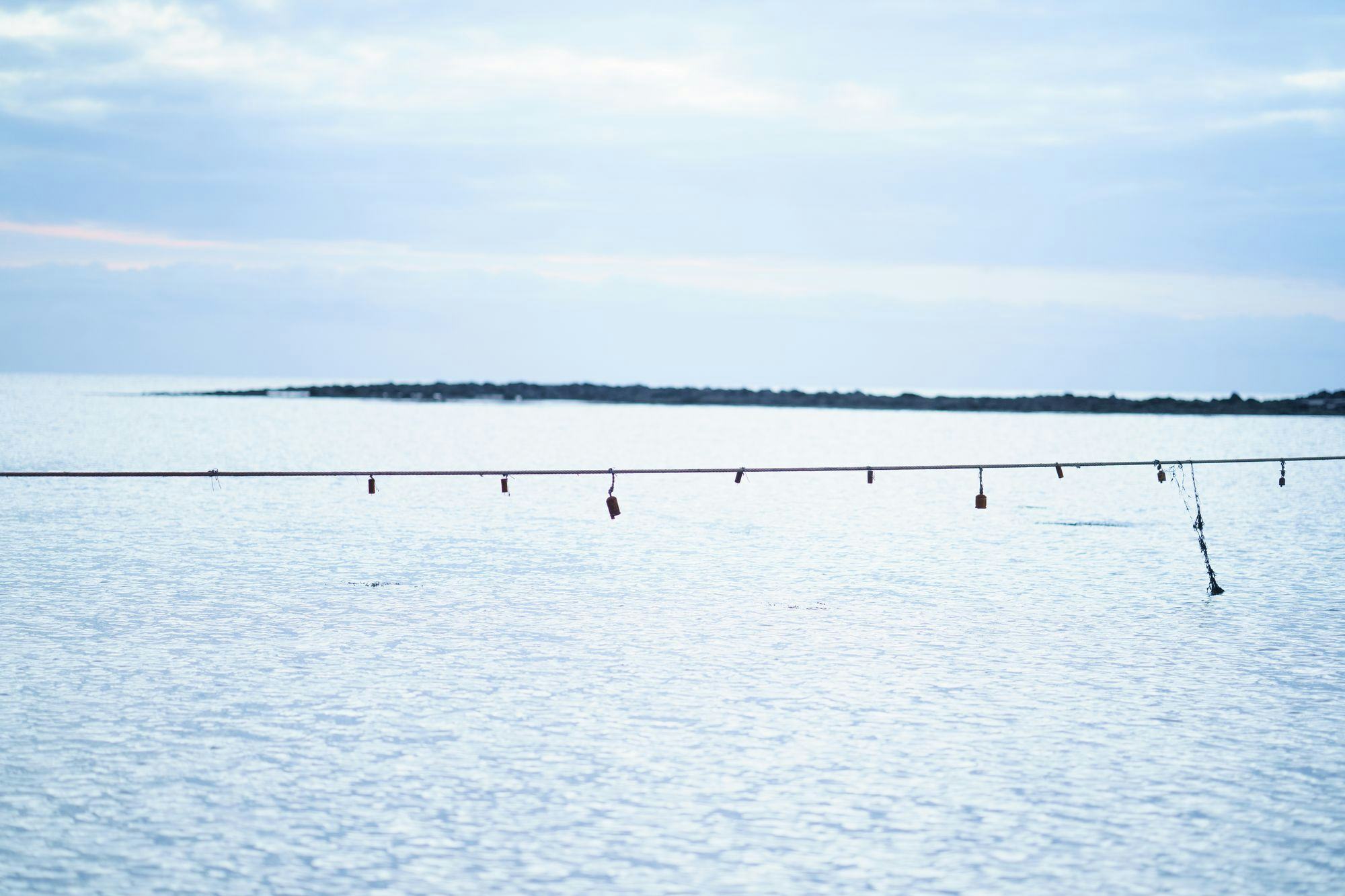
-icelandic-pavilion-2000x2667.jpg&w=2048&q=80)

